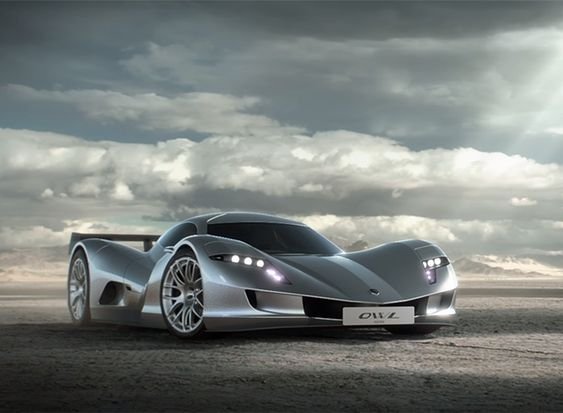
Augmented reality (AR) is rapidly making its way into various aspects of our daily lives, from entertainment and education to healthcare and retail. One of the most exciting applications of AR is in the automotive industry, where it is revolutionizing the driving experience. By overlaying digital information onto the real world, AR enhances the way drivers interact with their vehicles and the road, leading to improved safety, convenience, and overall driving enjoyment. This article explores how augmented reality is transforming the driving experience and what the future may hold for this innovative technology.
What is Augmented Reality?
Augmented reality is a technology that superimposes digital content, such as images, information, and animations, onto the real-world environment. Unlike virtual reality, which creates a completely immersive digital environment, AR enhances the real world by adding digital elements to it. In the context of driving, AR can be used to display useful information directly on the windshield or on a head-up display (HUD), allowing drivers to access this information without taking their eyes off the road.
Enhancing Navigation and Safety
AR-Enabled Navigation
One of the most practical applications of AR in driving is in navigation. Traditional GPS navigation systems require drivers to glance at a screen to follow directions, which can be distracting. AR-enabled navigation systems, on the other hand, project directions directly onto the windshield or HUD, aligning them with the road ahead. This allows drivers to see exactly where they need to turn, which lane they should be in, and how far they are from their destination without looking away from the road.
For example, AR navigation might display a virtual arrow on the road, indicating the exact point where the driver needs to make a turn. This intuitive guidance reduces the risk of missing turns and helps drivers stay focused on their surroundings, improving safety and reducing the likelihood of accidents.
Real-Time Hazard Detection
AR can also enhance safety by providing real-time hazard detection. Using data from sensors and cameras, AR systems can identify potential dangers on the road, such as pedestrians, cyclists, or obstacles, and highlight them on the windshield. This immediate visual cue alerts drivers to potential hazards, giving them more time to react and avoid accidents.
For instance, if a pedestrian is about to cross the street, the AR system can outline the pedestrian in bright colors on the windshield, ensuring the driver is aware of their presence. Similarly, if there is debris on the road, the AR system can highlight it, prompting the driver to steer clear.
Adaptive Cruise Control and Lane-Keeping Assistance
AR can also be integrated with advanced driver assistance systems (ADAS) like adaptive cruise control and lane-keeping assistance. These systems use AR to display information about the vehicle’s position within the lane and the distance to the vehicle ahead. For example, the AR system might show a colored line on the road indicating the optimal path for the vehicle to follow, or it might highlight the distance between the driver’s car and the car in front to ensure safe following distance.
This visual feedback helps drivers maintain safe driving habits and stay aware of their surroundings, reducing the risk of collisions and improving overall road safety.
Improving the In-Car Experience
Augmented Reality Head-Up Displays (HUDs)
Head-up displays (HUDs) have been used in cars for several years, but AR takes this technology to the next level. Traditional HUDs project basic information like speed and navigation onto the windshield, but AR HUDs can provide a much richer set of data. For example, an AR HUD can show points of interest (POIs) like nearby restaurants, gas stations, or parking spaces as the driver approaches them. It can also display real-time traffic information, weather updates, and even incoming messages, all within the driver’s line of sight.
This seamless integration of information makes driving more convenient and enjoyable, as drivers can access everything they need without taking their eyes off the road.
Entertainment and Connectivity
AR is also transforming in-car entertainment by creating more immersive experiences for passengers. For example, AR can be used to create virtual environments that passengers can explore during long trips. Passengers might use AR glasses or screens to interact with virtual objects, play games, or even watch movies that appear to be projected onto the surrounding environment.
Additionally, AR can enhance connectivity by integrating with smartphones and other devices. Drivers can use voice commands or gestures to control music, make calls, or send messages, with AR providing visual feedback on the windshield or HUD.
Customizable Dashboards
Another exciting application of AR is the creation of customizable dashboards. Traditional car dashboards are fixed, with physical dials and buttons that limit customization. AR dashboards, however, can be customized to display different information based on the driver’s preferences. For example, a driver might choose to display navigation, speed, and fuel efficiency data prominently, while minimizing or hiding less relevant information.
This level of customization allows drivers to tailor their driving experience to their specific needs and preferences, making driving more enjoyable and less distracting.
The Future of Augmented Reality in Driving
AR and Autonomous Vehicles
As the automotive industry moves towards autonomous vehicles, AR will play a crucial role in bridging the gap between human drivers and fully autonomous systems. Even in a fully autonomous vehicle, passengers may still want to be aware of their surroundings. AR can provide real-time information about the vehicle’s actions, such as why it is making a particular maneuver or how long until it reaches its destination.
Moreover, AR can be used to enhance trust in autonomous systems by providing visual explanations for the vehicle’s decisions. For instance, if the vehicle is slowing down due to an obstacle ahead, the AR system can highlight the obstacle and show the vehicle’s planned response.
Augmented Reality and the Connected Car Ecosystem
AR is also expected to become an integral part of the connected car ecosystem. As vehicles become more connected to each other and to infrastructure, AR can provide drivers with real-time data about traffic conditions, road closures, and other important information. This data can be overlaid on the road ahead, helping drivers make informed decisions and navigate more efficiently.
For example, in a smart city, AR might display the fastest route to a destination based on real-time traffic data, or it might alert drivers to a nearby parking spot that has just become available. This level of connectivity will make driving more efficient and less stressful, especially in urban environments.
Challenges and Considerations
While the potential of AR in driving is immense, there are also challenges to consider. Ensuring that AR systems are reliable and accurate is crucial, as incorrect or delayed information could lead to dangerous situations. Additionally, the cost of implementing AR technology in vehicles may be a barrier to widespread adoption, at least in the short term.
There are also considerations around driver distraction. While AR is designed to reduce distraction by providing information within the driver’s line of sight, there is a risk that too much information could overwhelm drivers. Striking the right balance between providing useful information and avoiding information overload will be key to the successful integration of AR in driving.
Conclusion
Augmented reality is poised to revolutionize the driving experience, offering new levels of safety, convenience, and entertainment. By overlaying digital information onto the real world, AR enhances the way drivers interact with their vehicles and the road, making driving safer and more enjoyable. As AR technology continues to evolve and become more integrated into the automotive industry, we can expect to see even more innovative applications that will transform the way we drive and experience the road. The future of driving is not just autonomous—it’s augmented.







